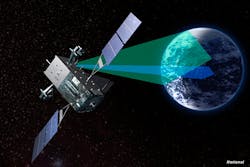Space Force optimistic about space surveillance capabilities of Next-Gen OPIR missile-defense satellites
WASHINGTON – The U.S. Space Force is pursuing a new generation of surveillance satellites and ground systems to improve detection of enemy missiles and provide greater resiliency against counter-space weapons. The Biden administration is boosting funding for the project as the military tries to stay ahead of the evolving threat. National Defense reports. Continue reading original article
The Military & Aerospace Electronics take:
9 Aug. 2021 -- The space-based Next-Generation Overhead Persistent Infrared (Next-Gen OPIR) platform will replace the legacy Space-Based Infrared System, or SBIRS. Infrared sensors detect heat emanating from enemy missiles.
Officials are using rapid prototyping to shave time off of the missile defense program and enable the Space Force to launch the first Next-Gen OPIR satellite in 2025, and have all five Block 0 satellites in orbit by 2030.
President Joe Biden’s 2022 budget request asks for $2.45 billion for the program, about $132 million more than the Trump administration had planned to spend that year. The detection capabilities of the new system is classified.
John Keller, chief editor
Military & Aerospace Electronics
